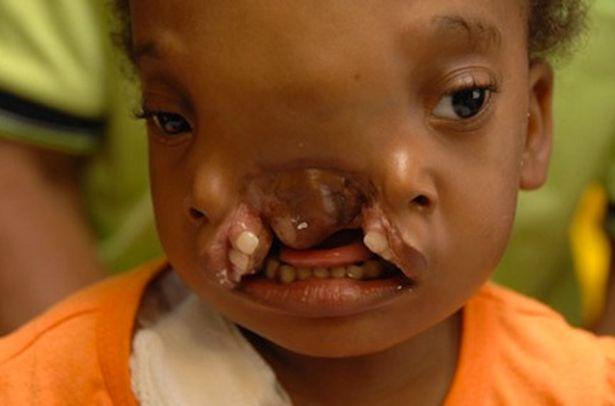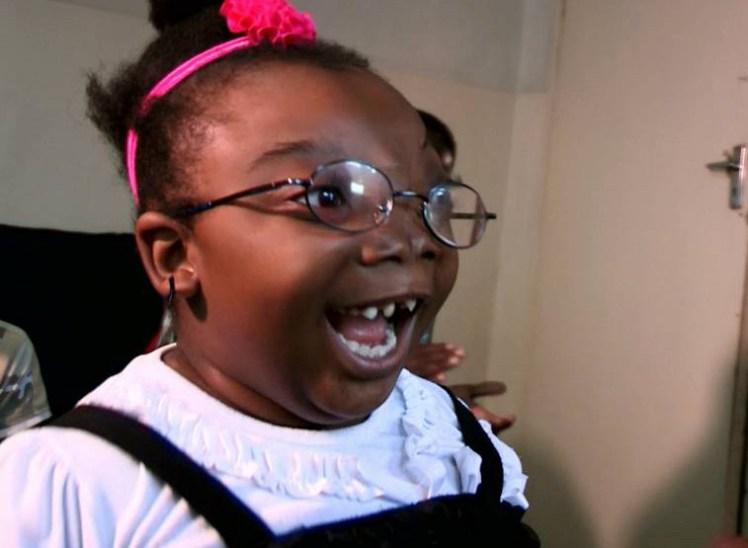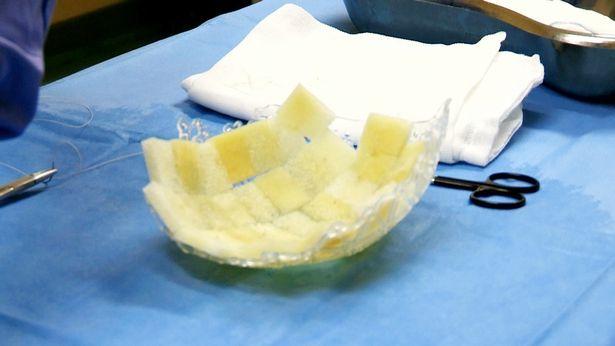One of the worst things a child can experience is to be set apart due to a physical deformity or abnormality. Even the smallest things can lead to angst that causes social anxiety.
Coupled with severe risk for infection that makes it impossible to play or hang out with other kids, seven-year-old Grace Kabelenga has had incredible challenges in her early life. And while the glamour and sheer umph of so many innovations that we see in 3D printing tend to take center stage, it’s the behind-the-scenes action in hospitals and operating rooms that offers true inspiration, and one can only imagine the rewards for the patients–and the surgeons as well.
The use of 3D printing technology in medical implants is becoming more and more widespread as doctors (and patients, as well as parents of patients) who are grasping for solutions to problems that could not have been as easily met years ago, are now able to use 3D scanning of CTs and MRIs, converting them to corresponding implants, models, and more for a wide range of uses.
 For little Grace of Ndola, Zambia, the challenge was in re-forming her forehead. Surgeons had been forced to remove a large section of her skull after she caught an infection while they were trying to correct her original craniofacial abnormality. In struggling with how to solve her issue, they turned indeed, to the power of 3D printing. And in doing so, doctors were able to change one little girl’s life so much for the better–and make history with the first 3D printed forehead implant.
For little Grace of Ndola, Zambia, the challenge was in re-forming her forehead. Surgeons had been forced to remove a large section of her skull after she caught an infection while they were trying to correct her original craniofacial abnormality. In struggling with how to solve her issue, they turned indeed, to the power of 3D printing. And in doing so, doctors were able to change one little girl’s life so much for the better–and make history with the first 3D printed forehead implant.
Performed in Cape Town, South Africa at the Tygerberg Hospital in May 2015, doctors were able to convert Grace’s CT into a 3D model, which was consequently made into a 3D printed ‘lattice framework.’ It was successfully implanted into her forehead and the results certainly do look nothing short of miraculous. The bone will grow around the 3D printed lattice and then it will biodegrade safely.
“This is just guidelines for where the skull would like to be,” said American surgeon Dr Kenneth Salyer, founder of the World Craniofacial Foundation. “The implant is ultimately absorbable and after six months it begins to break down and disappear. By that time new bone has started to regenerate and creates a new skull.”
The overall condition was due to an encephalocele, where the brain is actually exposed through a skull opening, Grace’s face had been extremely deformed. The condition, which developed during her mother’s pregnancy, caused an actual hole in her mouth where brain matter was hanging.
“When she was born she was rushed to a children’s hospital,” her mother, Ngula, said. “There was so many doctors but they told us they couldn’t do anything because it was beyond their ability.”
 She had another surgery at age three, in Argentina. She still did not have the proper bone in her forehead, however, and was forced to wear a padded helmet, due to only a thin layer of skin protecting her brain. Finally, Grace has a very normal look, and her skull has the protection it needs.
She had another surgery at age three, in Argentina. She still did not have the proper bone in her forehead, however, and was forced to wear a padded helmet, due to only a thin layer of skin protecting her brain. Finally, Grace has a very normal look, and her skull has the protection it needs.
‘”I’m very happy to see her, she looks beautiful and she has really changed,” Ngula said. “When we get home there’s going to be a big celebration.”
The reasons for the surgery, although certainly important for self-esteem and not feeling ostracized in society due to appearance, were actually not about aesthetics.
“The reason to operate was to save her life,” said Dr. Salyer. “She couldn’t live that way, and would not survive long term.”
The next hurdle will be dealing with the condition that makes it nearly impossible for Grace to play with others her own age. Doctors think that eventually they may be able to solve this issue for her, but up until this point if she fell and hit the open area of her skull and developed an infection or caught germs from other kids, the risk of her becoming seriously ill or even dying was very real. Grace has also never been to school.
For now, the most important issue is dealt with in allowing for her skull to be closed up as well as working to create the appropriate bone matter for her forehead. With that completed, it’s logical to think that the risk of infection may decrease and she will be able to lead a much more normal life soon in terms of being social and getting outside to play like a normal girl her age.
Discuss this story here.
[Source: Metro | Photos: Barcroft India]Subscribe to Our Email Newsletter
Stay up-to-date on all the latest news from the 3D printing industry and receive information and offers from third party vendors.
You May Also Like
Meltio Expands Global Reach with New Partnerships in the Americas and Europe
Spanish 3D printing manufacturer Meltio has expanded its sales network across the globe. With the addition of three new partners in the United States, Brazil, Argentina, and Italy, Meltio aims...
3D Printing Webinar and Event Roundup: April 7, 2024
Webinars and events in the 3D printing industry are picking back up this week! Sea-Air-Space is coming to Maryland, and SAE International is sponsoring a 3D Systems webinar about 3D...
On the Ground in Linares, Spain for the Meltio M600 Launch
As detailed in a previous post, metal 3D printer manufacturer Meltio launched its latest wire-laser metal deposition (LMD) machine, the Meltio M600, at its headquarters in Linares, Spain. There, I was...
Blue Laser-powered M600 3D Printer Launched by Meltio
Founded in 2019 as a joint venture between Additec and Sicnova, metal 3D printer OEM Meltio develops and manufactures high-performance and easy-to-use metal 3D printing solutions that use its patented wire-laser metal...
































